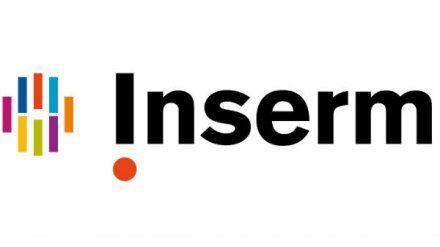Request Demo
Last update 08 May 2025
ROBO4
Last update 08 May 2025
Basic Info
Synonyms ECSM4, FLJ20798, Magic roundabout + [4] |
Introduction Receptor for Slit proteins, at least for SLIT2, and seems to be involved in angiogenesis and vascular patterning. May mediate the inhibition of primary endothelial cell migration by Slit proteins (By similarity). Involved in the maintenance of endothelial barrier organization and function (PubMed:30455415). |
Related
2
Drugs associated with ROBO4WO2023156437
Patent MiningTarget |
Mechanism- |
Originator Org. |
Active Indication |
Inactive Indication- |
Drug Highest PhaseDiscovery |
First Approval Ctry. / Loc.- |
First Approval Date20 Jan 1800 |
Target |
Mechanism ROBO4 antagonists [+1] |
Active Org.- |
Originator Org. |
Active Indication- |
Inactive Indication |
Drug Highest PhasePending |
First Approval Ctry. / Loc.- |
First Approval Date20 Jan 1800 |
1
Clinical Trials associated with ROBO4NCT02530918
Phase I Dose Escalation and Expansion Study of DS-7080a in Subjects With Neovascular Age-related Macular Degeneration or Diabetic Macular Edema
The purpose of this study is to test DS-7080a, a monoclonal antibody, as a new treatment for neovascular age-related macular degeneration (AMD) and diabetic macular edema (DME). The hypothesis of the study is that DS-7080a is safe and shows preliminary efficacy in patients with these conditions either alone or in combination with ranibizumab. This study is organized into 3 Parts: Part 1 Dose Escalation in AMD participants, Part 2 Dose Expansion in AMD participants, and Part 3 Dose Expansion in DME participants.
In Part 1, participants will be enrolled into 3 sequential, ascending dose-level cohorts in non-randomized uncontrolled manner with the main purpose to determine the recommended dose.
In Part 2, participants will be randomized to 1 of 3 arms of either monotherapy with DS-7080a or monotherapy with ranibizumab, which is an active control, or combination therapy of DS-7080a plus ranibizumab (ranibizumab will be administered 30 minutes prior to DS-7080a).
In Part 3, subjects with DME will be assigned to 1 of 2 arms of either monotherapy with DS-7080a or monotherapy with ranibizumab. DS-7080a or ranibizumab will be administered 3 times: on Baseline/Day 1, Day 29, and Day 57.
Both Parts 2 and 3 will consist of 8 visits including a 14-day screening phase, an 84-day treatment period, and a 28-day follow-up period.
In Part 1, participants will be enrolled into 3 sequential, ascending dose-level cohorts in non-randomized uncontrolled manner with the main purpose to determine the recommended dose.
In Part 2, participants will be randomized to 1 of 3 arms of either monotherapy with DS-7080a or monotherapy with ranibizumab, which is an active control, or combination therapy of DS-7080a plus ranibizumab (ranibizumab will be administered 30 minutes prior to DS-7080a).
In Part 3, subjects with DME will be assigned to 1 of 2 arms of either monotherapy with DS-7080a or monotherapy with ranibizumab. DS-7080a or ranibizumab will be administered 3 times: on Baseline/Day 1, Day 29, and Day 57.
Both Parts 2 and 3 will consist of 8 visits including a 14-day screening phase, an 84-day treatment period, and a 28-day follow-up period.
Start Date01 Jul 2015 |
Sponsor / Collaborator |
100 Clinical Results associated with ROBO4
Login to view more data
100 Translational Medicine associated with ROBO4
Login to view more data
0 Patents (Medical) associated with ROBO4
Login to view more data
267
Literatures (Medical) associated with ROBO401 May 2025·Current Opinion in Hematology
New mechanisms and therapeutic approaches to regulate vascular permeability in systemic inflammation
Review
Author: Puy, Cristina ; McCarty, Owen J.T. ; Vu, Helen H. ; Moellmer, Samantha A.
01 Jan 2025·International Journal of Experimental Pathology
Perinatal exposure to lead alters male reproductive behaviour and immunoreactivity of androgen and oestrogen receptors in the brain
Article
Author: Arteaga‐Silva, Marcela ; Ríos, Camilo ; Contreras‐García, Itzel Jatziri ; Rojas‐Castañeda, Julio César ; Guillen‐Herrera, Gustavo ; Montes, Sergio ; Limón‐Morales, Ofelia ; Landero‐Huerta, Daniel Adrian ; Vigueras‐Villaseñor, Rosa María
01 Dec 2024·Arteriosclerosis, Thrombosis, & Vascular Biology
Single-Cell Meta-Analysis Uncovers the Pancreatic Endothelial Cell Transcriptomic Signature and Reveals a Key Role for NKX2-3 in PLVAP Expression
Article
Author: Khan, Safwat T. ; Cleaver, Ondine ; Vohra, Shabana ; Taïb, Sonia ; Ahuja, Neha ; Nunes, Sara S.
Analysis
Perform a panoramic analysis of this field.
login
or

AI Agents Built for Biopharma Breakthroughs
Accelerate discovery. Empower decisions. Transform outcomes.
Get started for free today!
Accelerate Strategic R&D decision making with Synapse, PatSnap’s AI-powered Connected Innovation Intelligence Platform Built for Life Sciences Professionals.
Start your data trial now!
Synapse data is also accessible to external entities via APIs or data packages. Empower better decisions with the latest in pharmaceutical intelligence.
Bio
Bio Sequences Search & Analysis
Sign up for free
Chemical
Chemical Structures Search & Analysis
Sign up for free


